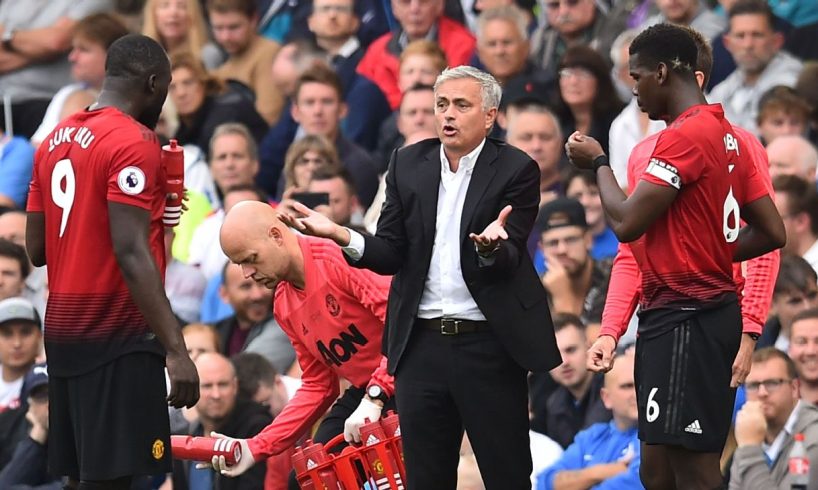
Chris Wright, Toe Poke writerSep 6, 2023, 05:30 AM ET
With average transfer fees escalating and €100 million-plus deals increasingly common, the financial spotlight is shining brightly on soccer teams around the world. But which clubs have done well and which have failed? Helpfully, the CIES Football Observatory have conducted a study that can explain it all.
Editor’s Picks
2 Related
CIES’ report looked at the 100 most active clubs across the past decade in terms of net transfer spending (incomings minus outgoings). From 2014 onwards, Manchester United have emerged as the club with the single biggest negative balance, but they are not alone from the Premier League as there are plenty of others who have failed to “break even” too.
While spending in Europe (particularly in England) has seen records fall on an almost-yearly basis, there are some successes to be found as well, with clubs from Portugal and France making great use of the transfer market to boost their profits.
– Stream on ESPN+: LaLiga, Bundesliga, more (U.S.)
Note: The CIES figures include full, fixed transfer fees plus any further add-ons (whether or not they have been paid) as well as any fees paid as part of loan deals. Furthermore, fees included as an “obligation to sign permanently” clause in said loan deals are also factored in. The transfer figures represent estimates that are as close as possible to reality. They are based on official data published by FIFA TMS for international transfers and the CIES Football Observatory’s own research. The sums of paid transfers for which no figures have been published have been extrapolated using a property statistical model estimating the value of professional football players.
So, here’s a breakdown of the best and worst performers.
1. Manchester United are clearly the worst
During the past decade, Manchester United have amassed the largest negative transfer spend of any top club in world football with an ominous balance of -€1.4 billion. This reflects the club’s propensity to sign players in lavish marquee deals without necessarily being able to move them on for profit.
For example, all 10 of the biggest signings in United’s history have arrived since 2014 and of the three players to have since departed Old Trafford — Paul Pogba (€105m), Romelu Lukaku (€84m) and Ángel Di María (€75m) — none recouped anything beyond a fraction of their original transfer fees.
Paul Pogba, right, left United for Juventus on a free transfer in 2022. Getty
2. Three clubs have made transfer losses over €1bn
Net spend in transfer market
TeamSince 2014In 2023Manchester United (ENG)€-1.39bn€-151mChelsea FC (ENG)€-1.033bn€-558mParis Saint-Germain (FRA)€-1.01bn€-216mArsenal FC (ENG)€-872m€-217mManchester City (ENG)€-856m€-54mNewcastle United (ENG)€-671m€-208mFC Barcelona (ESP)€-663m€-8mTottenham Hotspur (ENG)€-609m€-151mAC Milan (ITA)€-545m€-55mWest Ham United (ENG)€-526m+€7m
Along with Manchester United, big-spending Chelsea and Paris Saint-Germain are unsurprisingly the only other clubs in the world to have accrued net transfers losses beyond €1bn over the past decade.
Lavish spending and sub-par market dealings have led both Chelsea and PSG to rack up losses that are both more than €200m higher than the club in fourth place, which is Arsenal (-€872m).
Just to top things off, Chelsea can also boast the highest negative transfer balances in the post-COVID period (-€993m) and for the calendar year 2023 (-€558m.) Given that the Blues have now spent over €1bn during the past three transfer windows (since summer 2022) we can only imagine things are set to continue in much the same vein at Stamford Bridge.
3. Top 10 is crowded by Premier League
Widely touted as the richest league on the planet, Premier League teams well and truly clutter the top 10 when it comes to CIES’ biggest negative transfer balances since 2014.
Seven of the top 10 clubs hail from the English top flight. And over a quarter of the clubs in the 100-strong list hail from English football, with 27 in total making their way into the standings including several Championship sides: Leeds, Leicester City, West Brom, Stoke, Middlesbrough, Watford, etc.)
play
2:32
How Chelsea have navigated financial fair play rules despite big spending
Gab Marcotti explains how Chelsea have avoided the financial fair play rules despite spending nearly £1 billion since Todd Boehly has taken over.
4. Beyond the Premier League
Of the non-Premier League clubs to find themselves riding high in the net transfer loss stakes, Barcelona (7th, -€633m) trail outliers Paris Saint-Germain by some distance in the top 10 while AC Milan (9th, -€545m) are the only other non-English club to appear.
Comparatively speaking, European giants Bayern Munich (18th, -€323m) and Real Madrid (19th, -€325m) fare favourably against their fellow heavyweights. However, both still find themselves inside the top 20, narrowly ahead of Nottingham Forest (20th, -€310m.)
There is only one non-European club included in the entire 100 and that is Saudi Pro League outfit Al Hilal (13th, -€457m), who have accrued over three quarters of that net loss (-€362m) in 2023 alone after completing deals for the likes of Neymar (€90m), Kalidou Koulibaly (€23m), Rúben Neves (€60m) and Sergej Milinkovic-Savic (€40m).
5. Portuguese giants doing good business
Net spend in transfer market
TeamSince 2014In 2023Benfica (POR)€764m€199mAjax (NED)€434m€19mFC Salzburg (AUT)€422m€50mAS Monaco (FRA)€402m€7mSporting CP (POR)€376m€50mFC Porto (POR)€352m€19mLOSC Lille (FRA)€350m€12mLyon (FRA)€336m€75mPSV Eindhoven (NED)€262m€98mDinamo Zagreb (CRO)€251m€63m
Of the 100 most active clubs included in CIES’ analysis, several Portuguese clubs are ranked among the most financially efficient sides in the world since 2014.
Benfica are top of the class, having comfortably achieved the best net spend return in world football (+€764m), way ahead of Dutch giants Ajax in second place (+€434m) and Austria’s FC Salzburg in third (+€422m.)
Benfica have been boosted by a succession of enormous player departures in recent years with the likes of João Félix (€126m), Enzo Fernández (€121m), Darwin Núñez (€100m) and Rúben Dias (€71.6m) all leaving the Eagles in incredibly lucrative transfer deals.
Furthermore, proving that the top Portuguese clubs have seemingly perfected a successful formula when it comes to their transfer dealings, both Sporting CP (+€376m) and FC Porto (+€352m) occupy 5th and 6th place on the list.
6. Things are spiraling in 2023
Thanks to a handy breakdown in the CIES data, the sheer amount of transfer fees spent by clubs around the world in the calendar year 2023 is approximately €12.4bn — which is already almost 25% higher than the previous global record, set in 2019.
This huge leap has been propelled in large part by the sharp increase in investment made by clubs both in the English Premier League and those in the Saudi Pro League, who continue to adorn their squads with star names plucked from foreign leagues around the world.
As previously mentioned, Chelsea (-€558mn) have incurred the biggest net transfer losses this calendar year after making a procession of signings during the past two windows, including breaking the British transfer record twice in the space of six months to sign Fernandez (€121m) and Moises Caicedo (€133m) from Benfica and Brighton respectively.
In contrast, Spanish LaLiga club Villarreal have presided over the most positive net spending in the 2023 calendar year (+€129m), which was aided by very few incoming players and exits for striker Nicolas Jackson (€37m, to Chelsea), Pau Torres (€30m, to Aston Villa) and Samuel Chukwueze (€20m, to AC Milan.)






